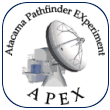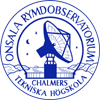Atmospheric opacity calculator
The first step is to select the receiver and frequency (in GHz), then press select button. The next step is to write the amount of precipitable water vapor (PWV), then you can calculate the zenith optical depth τo. The PWV values vary both during the day and over the year (see the annual weather information page http://www.apex-telescope.org/weather/year_weather/index.html). Night and morning conditions are generally better, while the afternoons are worse. Conditions are best from June to November, but significantly worse from the end of December to early April. Averaged over the year, the median value is around 1 mm. Conditions better than 0.5 mm occur during 25% of the time. The entered frequency and the calculated τo will be transferred to the RMS and integration time calculators below.
RMS calculator |
Integration time calculator |
By entering the atmospheric temperature (some 10 degrees below the ground temperature at Chajnantor), the (average) elevation of the source, the receiver temperature, an on-source integration time, and the spectral resolution, the RMS (in K) can be estimated. See the observing time calculation page for details. |
By entering the atmospheric temperature (some 10 degrees below the ground temperature at Chajnantor), the (average) elevation of the source, the receiver temperature, required RMS (in K), and the spectral resolution, the on-source integration time can be estimated. Also the total time is calculated assuming toff=ton and a system observing efficiency of 0.625, i.e. ttotal=(ton + toff)/0.625. The system efficiency takes into account time for telescope movements and calibrations. |
|
|




